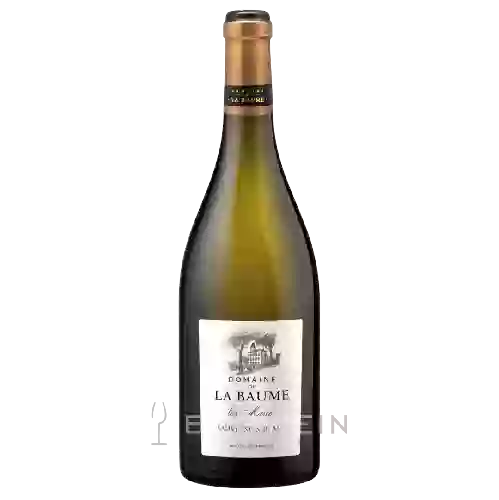The Domaine de la Baume of Languedoc-Roussillon

The Domaine de la Baume is one of the best wineries to follow in Languedoc-Roussillon.. It offers 79 wines for sale in of Languedoc-Roussillon to come and discover on site or to buy online.
Looking for the best Domaine de la Baume wines in Languedoc-Roussillon among all the wines in the region? Check out our tops of the best red, white or effervescent Domaine de la Baume wines. Also find some food and wine pairings that may be suitable with the wines from this area. Learn more about the region and the Domaine de la Baume wines with technical and enological descriptions.
How Domaine de la Baume wines pair with each other generally quite well with dishes of beef, pasta or veal such as recipes of baeckeoffe, shrimp marinade or veal escalope with marsala.
On the nose the red wine of Domaine de la Baume. often reveals types of flavors of black fruit, cherry or oaky and sometimes also flavors of earthy, blackberry or red fruit. In the mouth the red wine of Domaine de la Baume. is a powerful with a nice balance between acidity and tannins.
Languedoc (formerly Coteaux du Languedoc) is a key appellation used in the Languedoc-Roussillon wine region of southern France. It covers Dry table wines of all three colors (red, white and rosé) from the entire region, but leaves Sweet and Sparkling wines to other more specialized appellations. About 75% of all Languedoc wines are red, with the remaining 25% split roughly down the middle between whites and rosés. The appellation covers most of the Languedoc region and almost a third of all the vineyards in France.
The typical Languedoc red wine is medium-bodied and Fruity. The best examples are slightly heavier and have darker, more savoury aromas, with notes of spice, undergrowth and leather. The Grape varieties used to make them are the classic southern French ones: Grenache, Syrah and Mourvèdre, often with a touch of Carignan or Cinsaut. The white wines of the appellation are made from Grenache Blanc, Clairette and Bourboulenc, with occasional use of Viognier, Marsanne and Roussanne from the Rhône Valley.
How Domaine de la Baume wines pair with each other generally quite well with dishes of pasta, vegetarian or poultry such as recipes of spaghetti neapolitan style, spinach and goat cheese quiche or turkey cutlets with feta and cherry tomatoes.
On the nose the white wine of Domaine de la Baume. often reveals types of flavors of cream, oaky or tropical and sometimes also flavors of citrus, apples or peach. In the mouth the white wine of Domaine de la Baume. is a powerful.
Malbec, a high-yielding red grape variety, produces tannic and colourful wines. It is produced in different wine-growing regions and changes its name according to the grape variety. Called Auxerrois in Cahors, Malbec in Bordeaux, it is also known as Côt. 6,000 hectares of the Malbec grape are grown in France (in decline since the 1950s). Malbec is also very successful in Argentina. The country has become the world's leading producer of Malbec and offers wines with great potential.
How Domaine de la Baume wines pair with each other generally quite well with dishes of pork, rich fish (salmon, tuna etc) or vegetarian such as recipes of creole chipolatas, leek and salmon lasagna or zucchini and goat cheese quiche.
On the nose the sparkling wine of Domaine de la Baume. often reveals types of flavors of strawberries, raspberry or microbio and sometimes also flavors of red fruit, cream or citrus. In the mouth the sparkling wine of Domaine de la Baume. is a with a nice vivacity and a fine and pleasant bubble.
Strong rosé wine reminiscent of a light red.
How Domaine de la Baume wines pair with each other generally quite well with dishes of spicy food or sweet desserts such as recipes of seafood pastilla or birthday cake.
How Domaine de la Baume wines pair with each other generally quite well with dishes of beef, mature and hard cheese or pasta such as recipes of beef coarse salt, reblochon pie or tuscan linguine.
On the nose the pink wine of Domaine de la Baume. often reveals types of flavors of citrus, peach or strawberries and sometimes also flavors of raspberry, pear or orange. In the mouth the pink wine of Domaine de la Baume. is a with a nice freshness.
The practice of removing excess bunches of grapes from certain vines, usually in July, but sometimes later. This is often necessary, but not always a good thing, as the remaining grapes tend to gain weight.
Planning a wine route in the of Languedoc-Roussillon? Here are the wineries to visit and the winemakers to meet during your trip in search of wines similar to Domaine de la Baume.
The white Chardonnay is a grape variety that originated in France (Burgundy). It produces a variety of grape specially used for wine making. It is rare to find this grape to eat on our tables. This variety of grape is characterized by small bunches, and small grapes. White Chardonnay can be found in many vineyards: South West, Burgundy, Jura, Languedoc & Roussillon, Cognac, Bordeaux, Beaujolais, Savoie & Bugey, Loire Valley, Champagne, Rhone Valley, Armagnac, Lorraine, Alsace, Provence & Corsica.